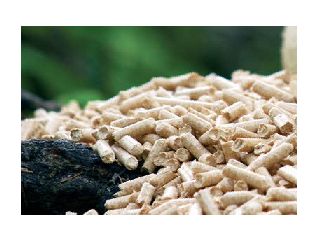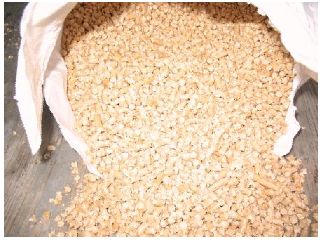Wood pellet market in Canada and USA
Wood pellets are compressed wood particles that are used as fuel. Pellets are already commonly, but they are growing in popularity as the cost of primary fuels increases and concerns about global climate change build. This fact sheet is a short introduction to wood pellets and will be helpful to those who are interested in using or producing wood pellet fuel.
Demand for wood pellets as a bio-mass fuel is an increasingly important component of the global energy market as national energy self sufficiency and environmental goals are realized.
Under the Kyoto Agreement, the CO2 and other emissions for bio-fuels are considered to be ‘clean’ fuel sources in consuming markets. Countries are willing to pay a premium for bio-fuels over fossil fuels and in particular, for bio-fuels from reliable production sources such as Canada.

There are more than 80 pellet mills in North America currently produce in excess of 1 million tons of pellets annually. Markets for wood pellets are well established, especially in the northeastern United States. Rising prices for fossil fuels such as fuel oil and natural gas are leading to increased interest in wood pellet heating. Concern over global climate change is also stimulating interest in wood pellets and other “carbon-neutral” energy sources.

Wood pellet heating systems are considered an essential component of European plans to for energy self sufficiency2 and for reductions in green house gas (GHG) emissions to meet the obligations of the Kyoto Protocol. In March 9th, 2007, European countries agreed to reduce their respective GHG by 20% by 2020 and that 20% of their produced energy be from renewable energy sources. Europe has led the switch away from fossil fuels to bio-energy through grant programs for bio-energy and bi-energy / Combined Heat-and-Power systems, infrastructure programs, industry and consumer awareness campaigns, and R&D to minimize emissions from bio-energy fuels. Wood pellet heating systems three major market sectors: residential, institutional and co-generation are targeted by incentive programs in countries such as Germany, Norway and Sweden. In major cities such as Stockholm, area heating systems have been retrofitted for wood pellets. A significant portion of the consumer home heating market has converted to wood pellet stoves / furnaces. Sophisticated control systems combined with consumer education on efficient operation of home systems ensure wood pellet heating is a relatively clean burning fuel.

In many European countries wood pellets are used in cogeneration, where steam is produced to turn turbines to generate electricity and to heat homes and offices in the winter.

In contrast to the European market for wood pellet heating, Canada and the US have not yet developed the consumer awareness, sophisticated appliances or incentive programs necessary to create significant and sustained demand in the consumer, institutional or cogeneration market sectors. European production of wood pellets is insufficient to meet current demand. It is expected that this deficit will increase significantly due to strong demand from all three major market sectors: residential, institutional and co-generation. In 2007, European wood pellet production is forecasted to be around 5.6 million tonnes and the European wood pellet consumption to be around 6.9 million tonnes. Therefore the European imports of wood pellets are estimated to be around 1.3 million tonnes in 2007. In 2010, forecasts predict that the European production will be around 8.4 million tonnes and the consumption around 12.8 million tonnes. Thus, in 2010, imports wer3 4 million tonnes. The main European markets are in Northern Europe: Sweden, Denmark, Netherlands, Germany and Austria.
Market for wood pellets depends on:
- Availability (cost of transport);
- Heating-value/cost ratio compared to other fuels;
Biofuel News
- What are the key directions of Charcoal conference?
- Where Can I Find Charcoal Suppliers?
- World Battery Industry Expo (WBE 2021)
- Drax power station is waiting for the approval of fourth unit conversion
- The 13th China Guangzhou International Electric Heating Exhibition (GEHE2017)
- European Biomass Strategy 2020 - 2030
- A Briefing of Thailand Biomass for Power Generation
- How to dispose scrap metal
- Wood pellet market is rapidly growing in Europe and North America
- After a brief rally in February 2015, the prices for wood pellets in Germany have dropped in April 2015
- During one year the number of Ukrainian wood pellet producers doubled
- The number of Ukrainian straw pellet producers and sellers increased in 2012
- Rural locations in Odessa region will be heated with straw pellets
- Data base of Ukrainian manufacturers of pellets produced from sunflower husk
- World Biofuels Markets relocates to Rotterdam
- Over 260 industry decision makers gather in San Francisco on November 9-10 to discuss the future of biofuels
EVENT SUBMISSION GUIDELINES
